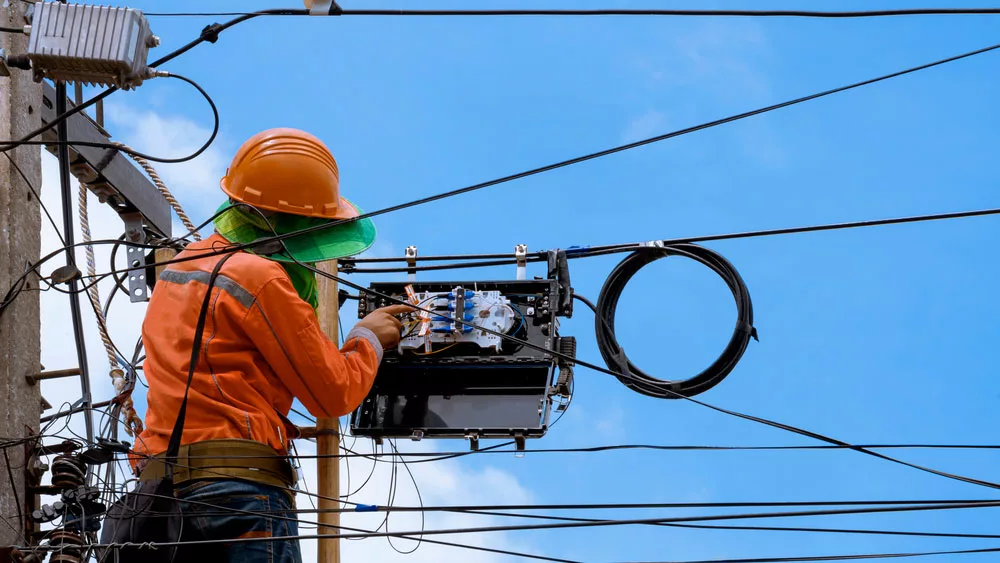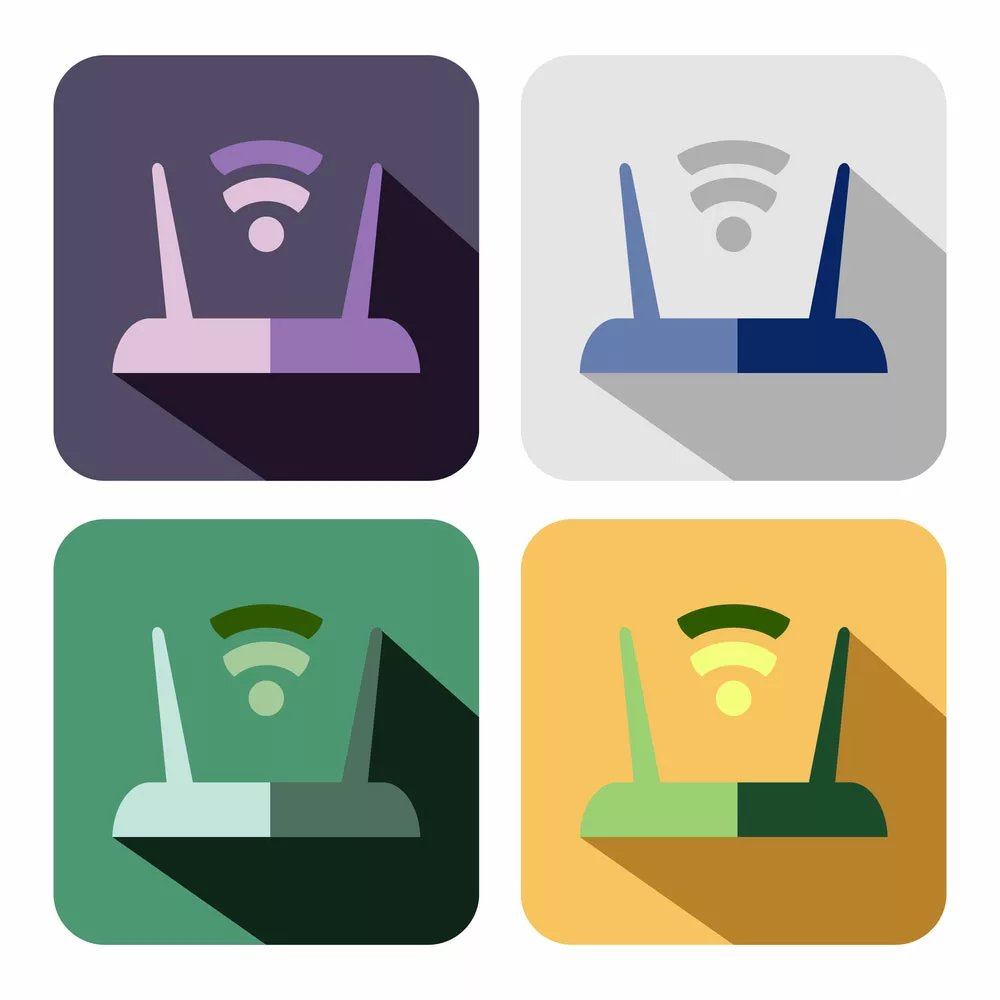About Fiber Optic Cable Bandwidth, Slow internet speeds could make a massive difference for a business. Now, data has to move much faster and with minimal interference.
Fiber optic cable makes it easy for vast chunks of data to move with negligible loss.
We’ll break down how fiber optic cable bandwidth enables that transfer.
Table of Contents
- What is bandwidth?
- How is fiber optic bandwidth measured?
- Is bandwidth different from internet speed?
- How do you check network bandwidth?
- What is the maximum bandwidth of fiber optic cable?
- Why is the bandwidth of optical fiber high?
- Are fiber and copper cables different in bandwidth?
- Is single and multimode fiber optic cable bandwidths different?
- Wrapping up
What is bandwidth?

Highway depicting the concept of bandwidth
Put, bandwidth is how much data can travel through a channel from point A to B at any time. Optical fiber bandwidth falls into two categories; single-mode and multi-mode.
Let’s put that in a practical scenario. If you have about five devices in a home all consuming wireless internet data, you may find times when access is sluggish.
The drop in speed is because the bandwidth cannot sustain the data usage.
Therefore, you can reduce the number of devices or increase bandwidth to meet the demand. However, bandwidth is not a measure of speed. We’ll discuss speed further down.
How is fiber optic bandwidth measured?
Have you come across something like 100Gbps on your network? The number indicates how much data could travel through that fiber optic channel per second. Fiber optic bandwidth is measured in gigabits per second.
To clarify, we measure fiber optic bandwidth in bits, not bytes. It is a common misconception that the two terms are interchangeable. A byte is a unit of storage.
Is bandwidth different from internet speed?

Technician working on fiber optic cable support device
While both are relevant to data transfer, bandwidth, and internet speed are different concepts. You can see bandwidth as ‘how much’ and internet speed as ‘how fast.’
Internet speeds are how fast data moves between connection points in seconds. Bandwidth is the amount of data that can move between connection points in seconds.
Note: Bandwidth can affect speed, while speed cannot exceed bandwidth. You can increase the internet speed by expanding bandwidth. Combining fast speed and wider bandwidth means you can support more devices on a network.
How do you check network bandwidth?
You can check network bandwidth by running a network internet speed test. The results show download and upload rates.
Usually, you should perform network tests at various times of the day to determine the average rates.
What is the maximum bandwidth of fiber optic cable?

Multiple devices on the same network
Theoretically, you can send one terabit of data through fiber optic cable. However, we have attained a maximum bandwidth of fiber optic cable of 100Gb/s
As applications develop and the need for faster speeds increases, there have been tests to push the limits of data transfer.
Researchers from the Technical University of Demark successfully transmitted 1.8 petabits per second. For context, one petabit equals one million gigabits.
In conjunction with Gothenburg’s Chalmers University of Technology in Sweden, they achieved the feat using a laser and optical chip.
Why is the bandwidth of optical fiber high?
Optical fiber is a level up from copper cable data transfer technology. Let’s break down why fiber optic cable bandwidth is so high.
- Data in fiber optic cable is in the form of light pulses. These light pulses move faster than electrical signals. Moreover, these light pulses can move through fiber optic cable regardless of the cable’s shape.
- Fiber optic data transmission relies on total internal light reflection. There is minimal loss of speed or strength, even over long distances.
- Optical fiber is made using glass. Therefore, electromagnetic interference does not affect the light pulses passing the fiber optic cable. Optical fiber can carry much more data with virtually no interference than other means.
- Optical fiber is typically laid undersea, where its unlikely to be disrupted. It also has heavy shielding that keeps it relatively safe from damage.
Are fiber and copper cables different in bandwidth?

Copper wires
Although both cables can transmit data, the bandwidth of fiber optic cables is significantly higher than that of copper cables. That’s why fiber optic cables are the most preferred choice for transmitting large amounts of data quickly and efficiently.
The maximum bandwidth of fiber optic cables can reach 10 Gigabits per second (Gbps) or higher, depending on the fiber optic cable. In contrast, copper cables have a maximum bandwidth of 1 Gbps.
Here’s a summary of the bandwidth difference between copper and optical fiber cables.
| Fiber Optic Cable Bandwidth | Copper Cable Bandwidth |
| Up to 10 Gbps maximum bandwidth | 1 Gbps maximum bandwidth |
| Supports faster data transfer over long distances | Limited to shorter distances |
| Immune to electromagnetic interference | Prone to electromagnetic interference |
| More expensive to install and maintain | Less costly to install and maintain |
Is single and multimode fiber optic cable bandwidths different?
The choice between multimode and single-mode fiber optic cable bandwidth can affect transmission speeds and data quality. Single-mode fiber optic cable bandwidth is more reliable where you need more bandwidth.
Let’s analyze the differences.
Rating
Single-mode fiber optic cable indicates performance using OS1 and OS2 fiber-grade systems. On the other hand, the multi-mode cable uses OM1, OM2, OM3, and OM4 systems. These systems limit the distance for different applications.
Distance and Data Rate
Single-mode optical fiber cable bandwidth can support long-distance applications, depending on speed.
For example, a 100 Mbit/s data rate is for distances up to two kilometers, 1 Gbit/s can relay data up to 1000 meters, and a 10 Gbit/s data rate is applicable up to 550 meters.
Conversely, multi-mode data bandwidth can reach 100 Gbit/s yet only applies within short distances.
Size Difference
Core diameter also makes a difference in bandwidth. Multi-mode fiber optic cable has a 50–100 micrometers core diameter. Single-mode optical fiber has a 1310 or 1550 nm core diameter.
Light Sources
The light source can also cause a difference in bandwidth between single-mode and multi-mode fiber optic cables. Multi-mode fiber sometimes uses LED lights or vertical-cavity surface-emitting lasers (VCSEL). These lights produce multiple wavelengths. These multiple wavelengths may reduce the bandwidth in multi-mode optical fiber.
On the other hand, single-mode optical fiber relies on lasers that produce light with equal wavelength and frequency.
This single-light transmission makes single-mode bandwidth preferable for reliable long-distance data transmission.
Attenuation Vulnerability
Multi-mode fiber optic bandwidth relies on multiple dimmer light sources that are more open to attenuation.
On the contrary, single-mode bandwidth relies on a single bright light source, almost unaffected by attenuation. Therefore, single-mode bandwidth is preferred for bandwidth-heavy operations.
Distortion
Finally, multi-mode bandwidth is affected by modal dispersion, while single-mode bandwidth doesn’t suffer the same problem. Modal dispersion is where each light mode in a multimode optical fiber has different delay times.
Wrapping up
Fiber optic cable has transformed how we communicate. Demand for more bandwidth will continue to rise as we rely more on data and speed-heavy applications, programs, and processes.
Fiber optic cable will provide the optimum bandwidth to support multiple devices in your home or business.
